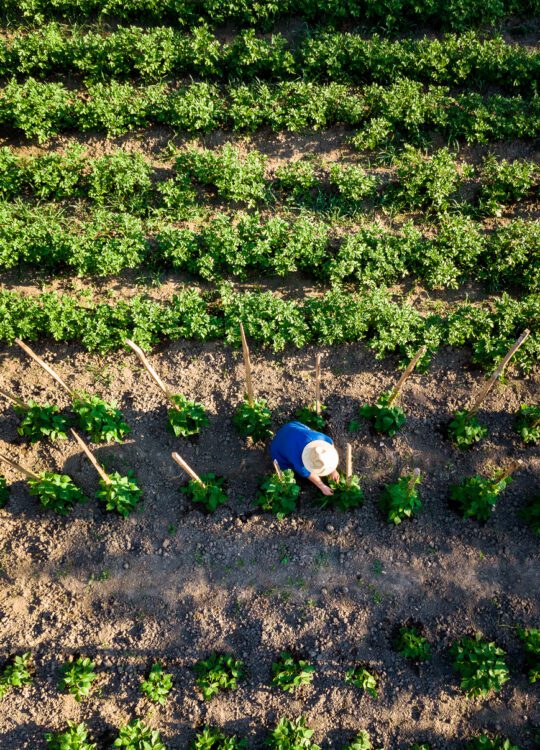April 22 is Earth Day. At Bread for the World, we commemorate Earth Day because it is central to our mission of ending hunger. There is no better occasion to raise awareness of the challenges of preserving Earth’s ecosystem for future generations.
In recent years, Bread has emphasized that climate change and hunger are inextricably linked, and climate change is one of the main causes of hunger. On March 20, the first day of spring, following one of the warmest winters on record, the U.N. Intergovernmental Panel on Climate Change (IPCC) convened and released its sixth assessment report. It is a grim analysis of the status of global climate change and the progress of international efforts to slow and eventually stop global warming.
The IPCC is the world’s leading body of scientists studying climate change. It has produced status reports since 1990. In this most recent assessment, the scientists do not mince words:
“There is a rapidly closing window of opportunity to secure a livable and sustainable future.”
Although everyone, particularly national and international leaders, should take the warnings seriously, it is perhaps equally important to look at the many opportunities that the report highlights. There are tools that have already been developed that can help avert catastrophic outcomes such as soaring numbers of people facing hunger. Some of these tools are no doubt familiar—for example, increasing access to renewable energy while reducing use of fossil fuels—while others are probably not as widely known.
One strategy we want to highlight is reducing food waste. We have discussed this in previous editions of Institute Insights, but now is a time to revisit the possibilities for progress, because reducing food waste is a key component of Bread for the World’s advocacy campaign for reauthorization of the U.S. farm bill. Congress is expected to take up the legislation this year.
So how does food waste contribute to climate change? The fact is that the food system “from farm to fork” includes producing, processing, packaging, and transporting food before we bring it home from the supermarket. When food is wasted, all of the energy used in these processes is also wasted. Most of this energy is produced with fossil fuels, which generate enormous amounts of the heat-trapping greenhouse gases that cause global warming.
Then there’s the consumer side of the climate change ledger. According to the U.S. Department of Agriculture, Americans toss out a lot of the food they purchase, much of it perfectly safe to eat, and it ends up in landfills. In fact, food is the largest share of solid waste in landfills. There is a major problem: as food breaks down in landfills, it emits methane, a highly potent greenhouse gas that has 80 times as much impact on the planet’s temperature as the same amount of carbon dioxide.
There is more than one way to reduce food waste. In Bread’s farm bill campaign, we are focused on food recovery as part of the solution. Food recovery focuses on nutritious foods such as fruits and vegetables. The goal is to make it easier for nonprofits and others to provide these foods to lower-income households who otherwise would not be able to afford fresh, healthy foods, would not have nearby places to buy them, or both.
Food recovery is a burgeoning movement in the United States, although many of those reading this will know that gleaning (one example of food recovery) has existed since Biblical times. After the crowds were fed and satisfied in The Feeding of the Five Thousand, Jesus instructed the disciples to gather the broken pieces of bread that were left, ensuring that nothing went to waste.
According to ReFED, the leading source for information on U.S. food waste, the country generated 54.2 million tons of food waste in 2019, the most recent year for which we have data. What is the impact on climate change? It’s the equivalent of more than 6 billion gallons of gasoline.
In 2016, the federal government set a goal to cut U.S. food waste in half by 2030. Progress has been slow and proactive leadership is needed. Too much of the burden of cutting food waste has been shifted to nonprofits and the private sector.
The farm bill reauthorization in 2023 is a prime opportunity to increase support for efforts to reduce food waste and promote food recovery. The farm bill is reauthorized every five years, and each one builds on the last. The 2018 farm bill was the first to dedicate resources to reduce food waste, laying the groundwork for expansion in 2023. There is more reason to be optimistic. The 2023 reauthorization is shaping up to be an instrument for advancing climate policy. As fans of Earth Day, we know this is how it should be.
Write your members of Congress and encourage them to support efforts to reduce food waste and promote food recovery in the farm bill.
Todd Post is senior domestic policy advisor, Policy and Research Institute, with Bread for the World.
This article appears in the April 2023 edition of Bread for the World’s Institute Insights newsletter. Institute Insights provides an in-depth look at the causes of hunger and malnutrition and offers potential solutions to address them. Click here to sign up for the monthly Institute Insights newsletter.



